
Arequipa is Peru’s second city and is flanked by three dramatic volcanoes. The city enjoys a spectacular, if somewhat seismically active setting. Despite a number of earthquakes over the centuries (the most catastrophic being in 1687) it is blessed with some of the country’s finest colonial churches and mansions, many of which were constructed from white volcanic rock, cut from the surrounding mountains. In 2000 the city’s central area earned a Unesco World Heritage listing and the sight of the enormous cathedral, with the exquisite image of El Misti rising behind it, is worth a visit alone. Stunning vistas aside Arequipa has also played an essential role in Peru’s culinary renaissance and there are many fine dining experiences to be enjoyed in the city.
If you’ve travelled to Arequipa from the highlands area (Colca Canyon or Lake Titicaca) then you'll be arriving in the late afternoon early evening after a tiring day on the road. If this is the case then we recommend checking in to your hotel in the city centre and then heading out a bit later on for dinner and a drink in the area around the cathedral and main square There are many good quality hotels in the old town area of the city, one of the best being the excellent boutique hotel Los Tambos on Puente Bolognesi.
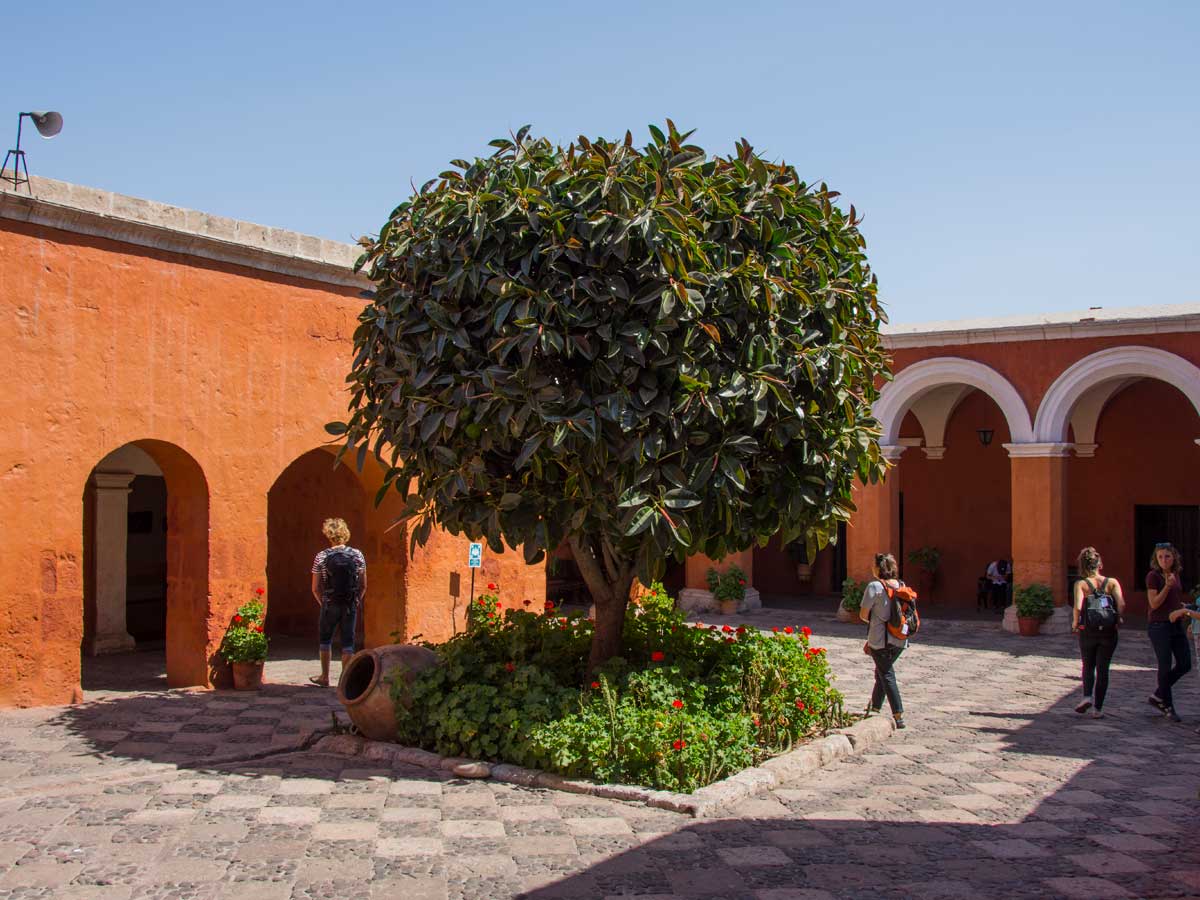
Monasterio de Santa Catalina
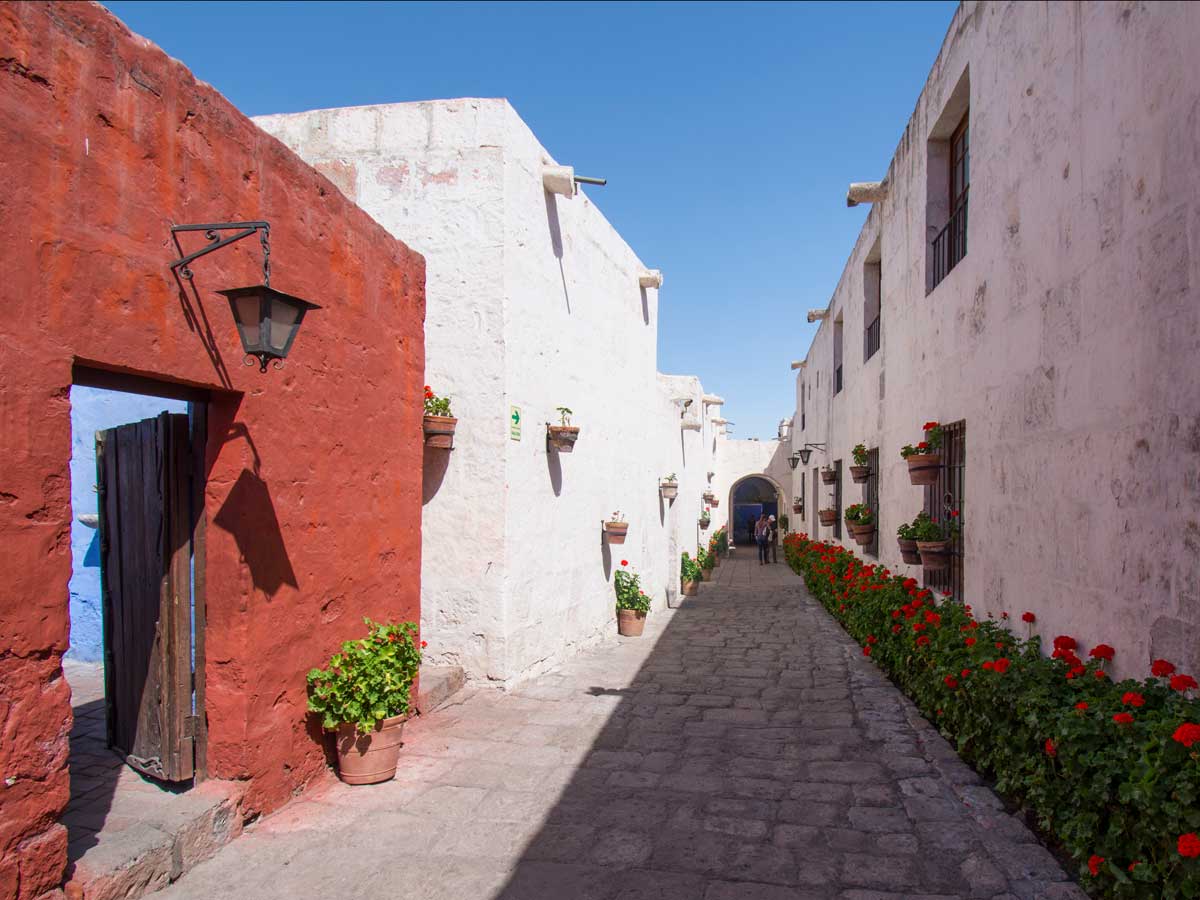
Monasterio de Santa Catalina
Although Arequipa is Peru's second city most of the interesting sights are concentrated in quite a small area. You can take your time exploring the city over two days and we would recommend staring off by spending a morning visiting Monasterio de Santa Catalina, this colourful convent spanning an entire block (over 20,000 sq meter) is an impressive citadel within the city and shouldn’t be missed even if you are feeling somewhat overdosed on colonial architecture.
On the Plaza de Armas, the massive Cathedral building dominates by sheer size and its stark white volcanic rock construction. is the only cathedral in Peru that stretches the length of a plaza. It also has a history of rising up from the ashes. The original structure, dating from the seventeenth century, was gutted by fire in 1844, then rebuilt, only to be levelled by the 1868 earthquake. Most recently an earthquake in 2001 toppled one of the towers! A lot of what you see now has been rebuilt over time, however it still looks as good as new! Go on a group tour of the cathedral, see the impressive organ (claimed to be the largest on the continent) and climb the stairs to the roof where you can get a close up view of the enormous church bells and also get a uninterrupted view of the Arequipa skyline and El Misti.
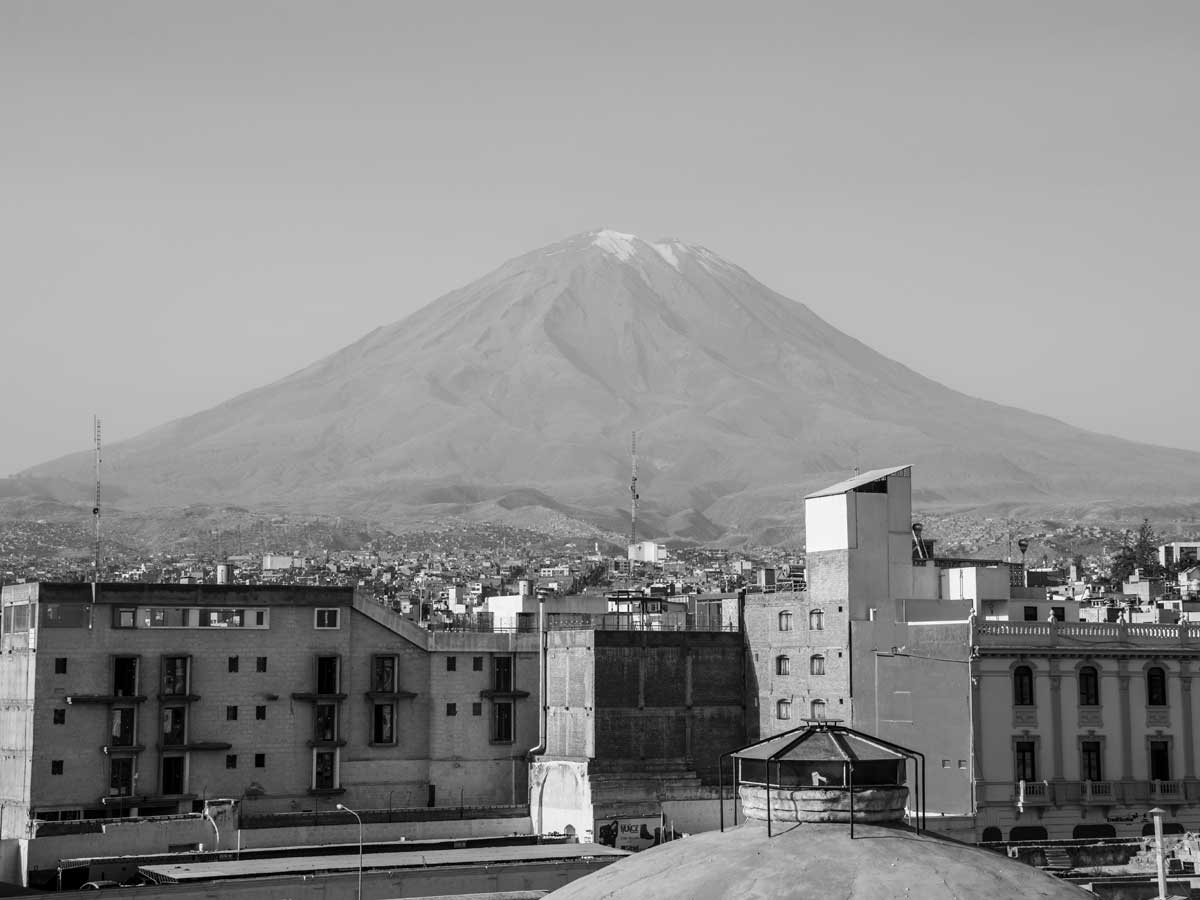
A view from the roof of the Basilica Cathederal
Just off of the southeast corner of Plaza de Armas and next to the Iglesia de La Compañía you will find Claustros de La Compañia, a beautiful, semi-outdoor shopping center featuring boutique shops, cafe’s and a wine bar.
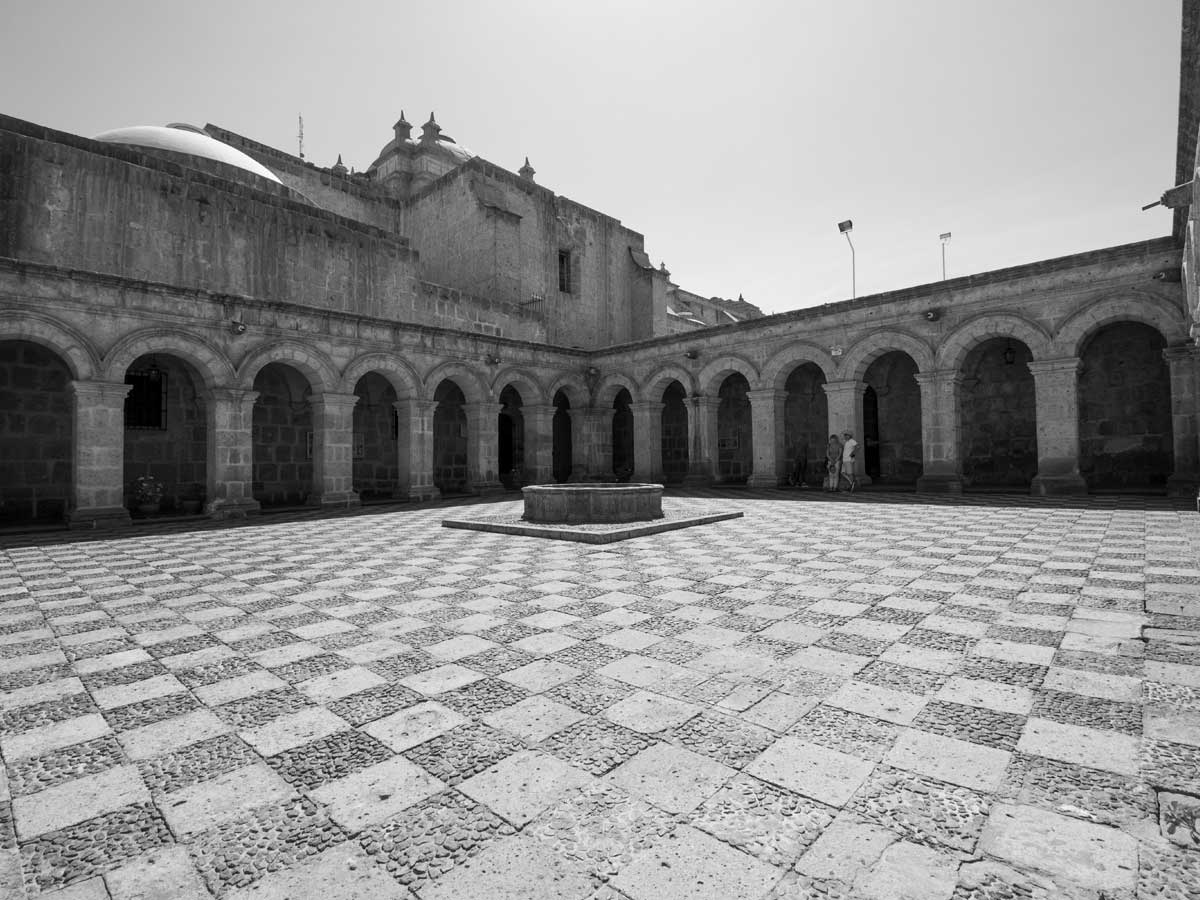
Claustros de La Compañia
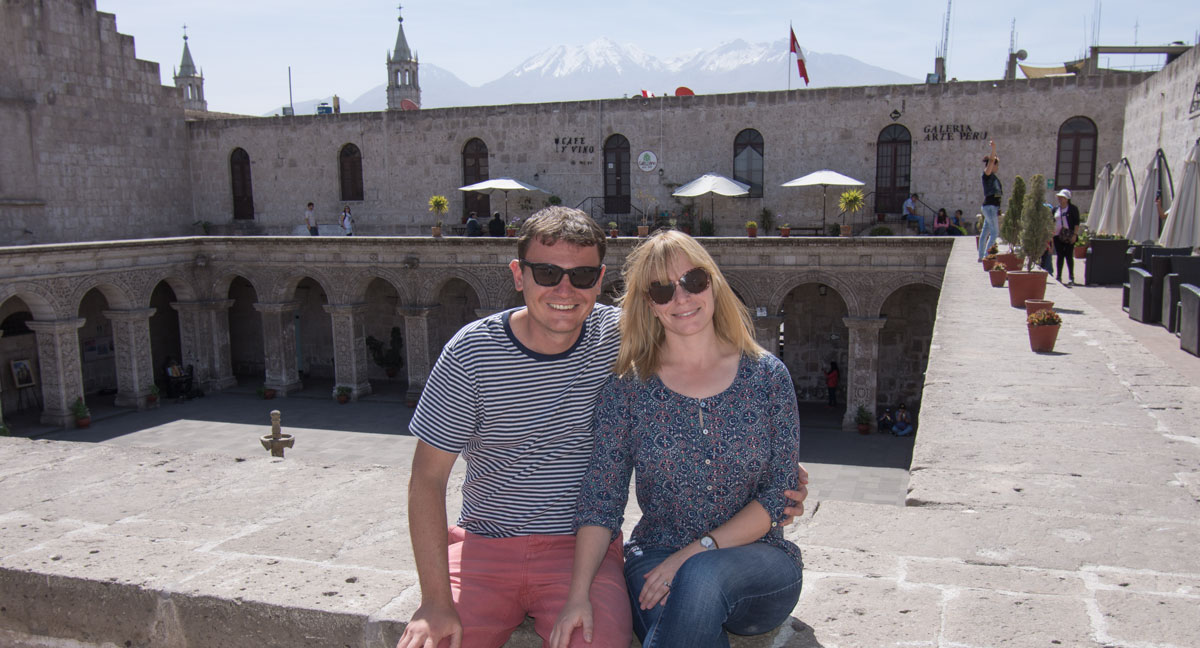
Claustros de La Compañia
Within walking distance but further out of the central area, you can visit the pretty suburbs of San Lázaro, Yanahuara and Cayma, the latter being renowned for its dramatic views of the valley.
For an exceptional dining experience Gastón Acurio’s Chicha restaurant is not to be missed (although you may need to pre-book). Step inside the fine colonial interior and sample the gastronomic delights ranging from experimental peruvian fusion to the honest staples. Great cocktails are also available at the bar!
If you’re after that perfect “picture postcard” photograph of the cathedral with El Misti in the background then we have a secret for you. Instead of heading to the crowded bar and restaurant in the north-east corner of the plaza, instead book a table for drinks (aim for an hour before sunset) at the bar on the roof of Katari Hotel on Portal de la Municipalidad, here you will find less tourists, a good selection of drinks and that all important vista.
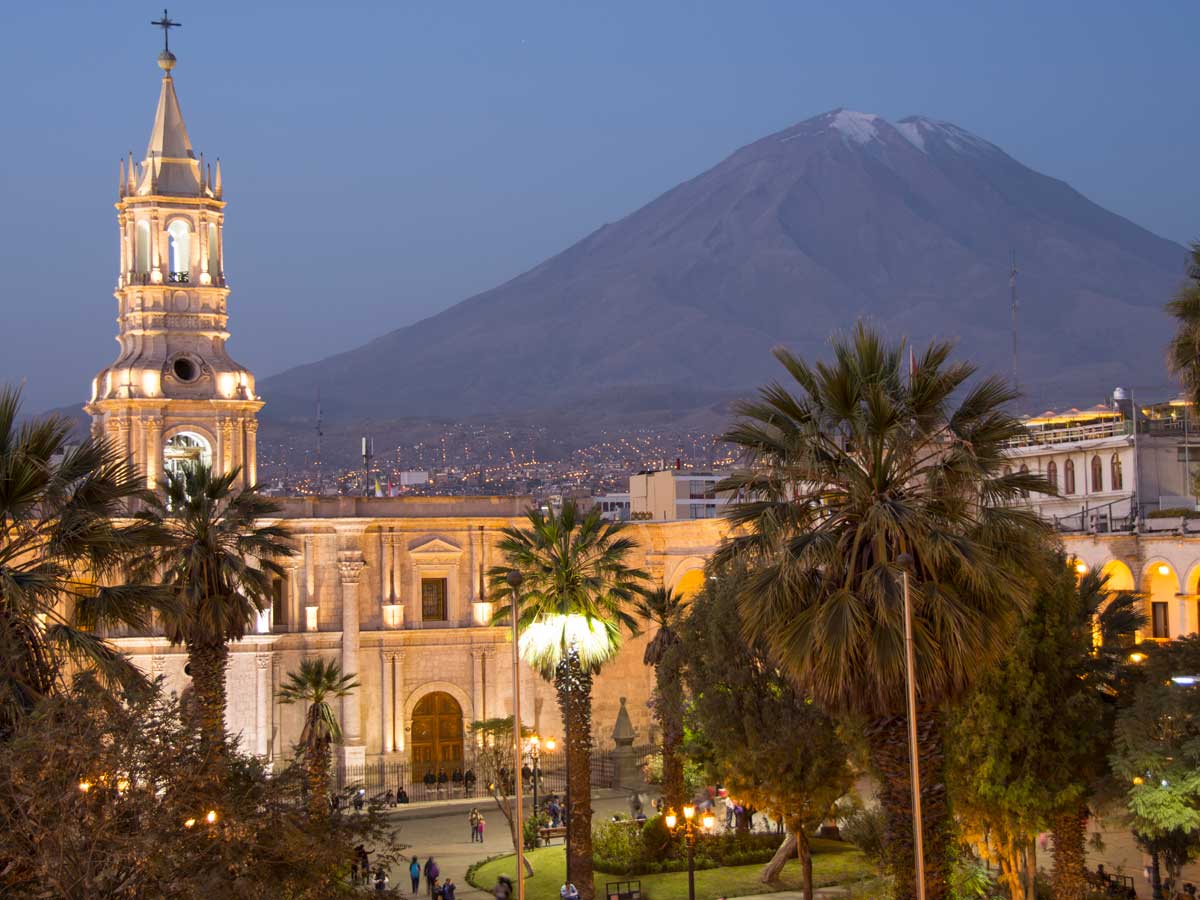
View of the Basiclica and Misti Volcano
There are a number of other establishments within the confines of the city centre that also deserve special mention.
Museo del Pisco is a must visit nightspot offering fantastic Pisco Sours Chilcanos, Mojitos and also boasts a good selection of snacks and main meals.
Zig Zag, an upscale but by no means expensive restaurant is located inside a two-story colonial house with a feature iron stairway designed by Gustave Eiffel. The menu consists of a classic meat selection served on a hot volcanic-stone grill with various sauces, the fondues are also pretty good.
Zingaro is one of the city’s leaders in culinary innovation, making it an ideal place to try out new renditions of Peruvian staples including alpaca ribs, ceviche, or guinea pig. You can complement your meal with any of Zingaro’s 250 varieties of wines from the Americas, Australia and Europe.


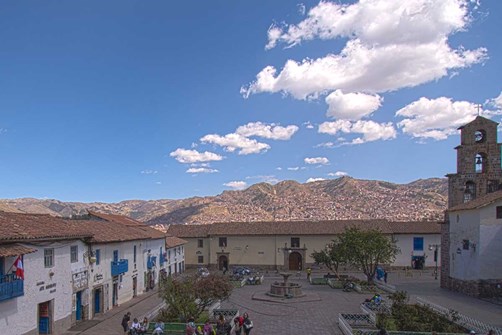
Leave a comment